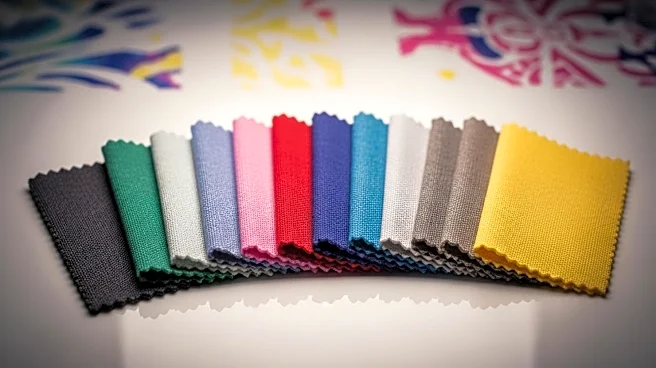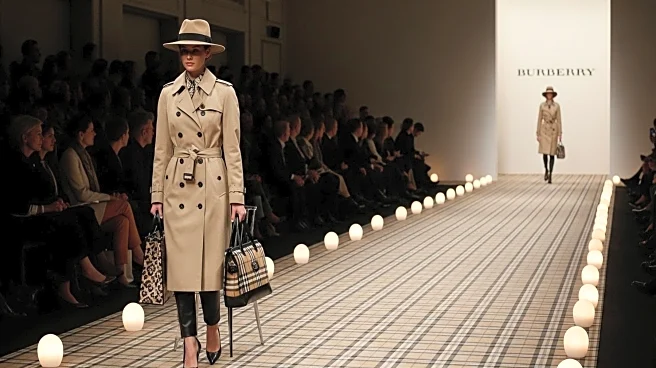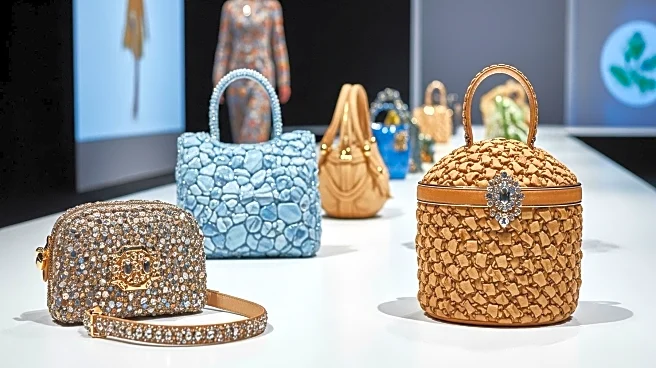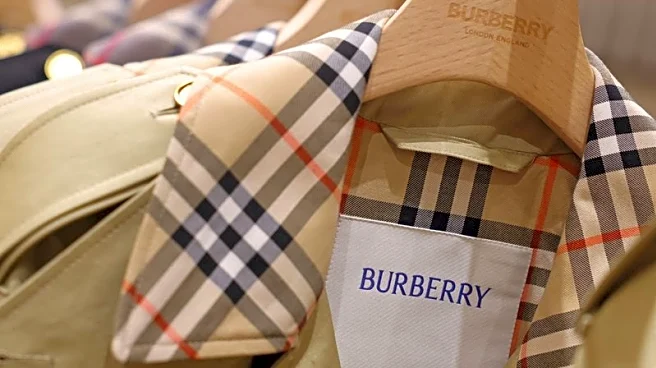What's Happening?
Mithridate, under the creative direction of Daniel Fletcher, unveiled its Spring 2026 Ready-to-Wear collection at London's Royal Opera House. Fletcher, who took over as creative director last January, has revamped the brand's logo and expanded its categories. The collection features 40 looks that blend British heritage sensibilities with Chinese craft and textiles. Highlights include feminine sculptural silhouettes, silk tassel scarves, and a mix of classic peacoats with modern designs. Fletcher's focus on fabrication has led to reimagined evening wear, including hand-pleated dinner shirts and silk nylon jackets. The collection also incorporates prints inspired by Chinese ceramics and motifs reflecting British sports style and Feng Shui.
Why It's Important?
The collection marks a significant shift for Mithridate, as Fletcher aims to establish the brand as an international luxury label. By integrating British and Chinese elements, Mithridate is positioned to appeal to a global audience, challenging the 'Made in China' stigma. Fletcher's approach highlights the potential for cross-cultural collaboration in fashion, which could influence industry trends and consumer perceptions. The emphasis on quality and craftsmanship may attract luxury consumers seeking unique and culturally rich designs, potentially boosting Mithridate's market presence and brand recognition worldwide.
What's Next?
Fletcher's vision for Mithridate includes expanding its international reach and solidifying its status as a luxury brand. The success of the Spring 2026 collection could lead to increased visibility and demand, prompting further collaborations and innovations. As Mithridate continues to blend cultural influences, it may inspire other designers to explore similar cross-cultural partnerships. The brand's focus on quality and craftsmanship could also set new standards in the luxury fashion industry, encouraging competitors to elevate their offerings.
Beyond the Headlines
The collection's integration of British and Chinese elements reflects broader cultural exchanges and globalization trends in the fashion industry. Fletcher's efforts to challenge stereotypes associated with 'Made in China' products highlight the evolving perceptions of Chinese manufacturing and craftsmanship. This shift could lead to increased appreciation for Chinese artistry and influence in global fashion, fostering greater cultural understanding and collaboration.











